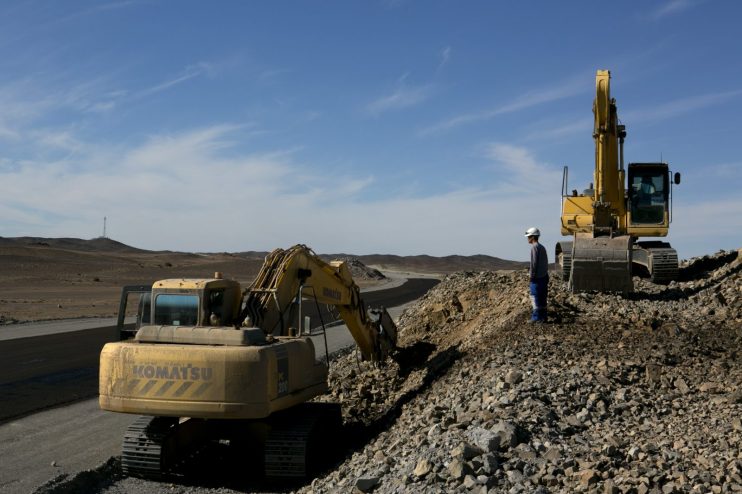EXCLUSIVE: Mining is key to a greener future argues Anglo Pacific boss

The mining sector is essential for a sustainable transition to a greener future, argued Anglo Pacific Group (Anglo Pacific) boss Marc Lafleche.
He told City A.M. investment and production of “forward-facing” commodities such as copper, nickel, cobalt and lithium for electric vehicle batteries and renewable technologies such as wind turbines was essential to meeting consumer demand as economies shift from fossil fuels in the coming decades.
Lafleche said: “There is a fundamental intersection of the global climate change objectives and the mining sector. The reality is without the supply of the raw materials and commodities like copper, nickel, cobalt, lithium, and others it’s just not going to be possible to meet global net zero targets.”
The portfolio boss argued that the mining sector is producing commodities in a more sustainable way, and that it can go hand in hand with decarbonisation plans.
He pointed to ESG risk strategies employed by the leaders in the mining sector, and revealed that Anglo Pacific always assesses the underlying sustainability characteristics of any operation it invests in.
As an example, he highlighted the company’s portfolio of nickel exposure, which sits amongst the lowest emitters of carbon per unit of nickel produced in the world.
He said: “In other words, it’s not just a matter of supplying the goal to the battery manufacturers to produce EVs. It’s also about producing that nickel in the first place with a very low carbon footprint to really magnify the benefits on the electrification trend.”
The company has shifted in recent years from coal projects and fossil fuels to more projects focusing on the transition to renewable energy and a greener future.
This even led to the announcement of a new chief executive, with Lafleche taking the reins earlier this year.
The International Energy Agency has warned that the energy transitions will significantly boost for mineral demand over the next 20 years.
By 2040, it estimates that mineral demand from clean energy technologies could potentially quadruple, with EVs and battery storage driving mineral growth.
It expects mineral demand in 2040 will be dominated by graphite, copper and nickel, with lithium seeing the fastest growth rate, with demand growing by as much as 40 times in the next 20 years.
This has led to the UK unveiling a critical minerals strategy and a research centre, as it scrambles to secure supplies in alliance with Western partners – to prevent the country being reliant on tenuous overseas supply chains overseen by potentially hostile countries like China.
Anglo Pacific enjoys record contributions
Anglo Pacific is a major player in natural resource royalties.
It is listed on the London Stock Exchange and operates in the capital.
The company holds a portfolio of investments in mining assets, securing royalties in projects focusing minerals and natural resources.
Earlier today, it posted robust half-year results for the first six months of trading this year, with a record portfolio contribution of $92.8m powered by a commodities boom and inflationary pressure.
This is 303 per cent higher than this time last year ($23m) and 8.4 per cent higher than the whole of 2021 ($85.6m).
The company’s adjusted earnings per share have climbed to 28.1 cents, reflecting strong commodity prices and portfolio contributions.
Highlights include a huge uplift in revenues from its Australian investments, after the Queensland Government added new tiers to the statutory royalty regime, significantly increasing royalties from the group’s Kestrel entitlement – with prices hitting A$175 per tonne.
Meanwhile, other names in its portfolio such as Brazilian Nickel announced first nickel production from one of its plants at the Piauí nickel and cobalt project in Brazil.
Elsewhere, Cameco announced plans to operate the Cigar Lake mine in Canada at 75 per cent of licensed capacity in 2024, which would reduce the volumes of ore toll milled at the McClean Lake mill.
It now has $180m of liquidity available to finance further growth opportunities, with the next quarterly dividend payment of 1.75p to be paid at the end of August.
The board also plans to rename the company to reflect the evolution of the portfolio, from which 90 per cent of its contribution is expected to come from future-facing commodities by 2026.